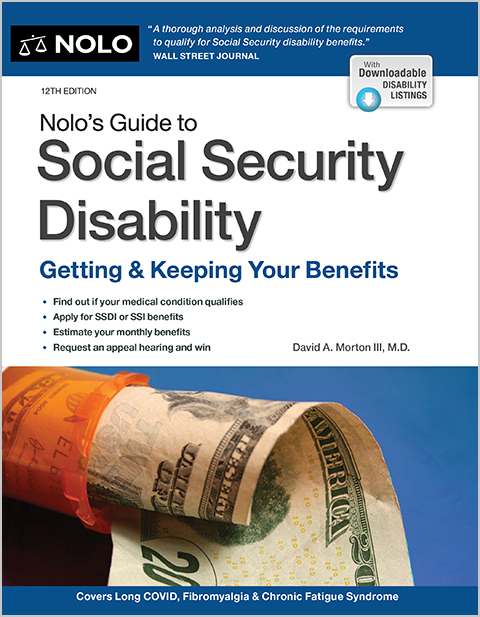Whether you will be found unfit with or without benefits depends on how your injury your occurred, your disability rating, and your years of service.
Active duty members who are referred to the Integrated Disability Evaluation System (IDES) usually have a lot of questions about what will happen to their military career—as well as their pay and benefits. IDES is the process the VA uses to help determine whether service members who are injured or ill are fit for continued military service. If you're found unfit for duty, you'll get a military medical discharge—either by way of a separation or retirement.
Fitness for Duty and Military Medical Retirement or Separation
If you're found unfit for duty and medically discharged from the military, you have the option of "separation" or "retirement," depending on how high your disability rating is and the length of your military service before becoming disabled.
What Does "Unfit for Duty" Mean?
The Physical Evaluation Board (PEB) determines your fitness for duty. "Fit for duty" means you can continue in military service because—despite your injury or illness—you remain reasonably able to perform the duties required of your grade and military occupation. In some cases, the PEB will find that you're generally fit for duty, but can't perform certain tasks due to your disability.
"Unfit for duty" means the PEB has determined that you have a medical condition that disqualifies you from service because you can't reasonably be expected to perform the duties of your office, grade, rank, or rating.
Which Medical Conditions Make You Unfit for Duty?
Any medical condition (or combination of conditions) that substantially impairs your ability to perform the duties required by your rank and military occupation can make you unfit for duty. Examples of relevant medical conditions include:
- post-traumatic stress disorder (PTSD) and other mental health disorders
- traumatic brain injury (TBI)
- vision or hearing loss
- amputated or lost limbs
- cardiovascular conditions such as heart failure, coronary artery disease, or arrhythmias
- respiratory disorders such as asthma or chronic obstructive pulmonary disease (COPD)
- chronic pain, such as from fibromyalgia or a back injury, and
- mobility impairments, such as paralysis.
Mental and cognitive disorders, like PTSD and TBI, can make it difficult for service members to cope with stress, perform required duties, and follow orders. Sensory impairments such as vision or hearing loss can interfere with service members' situational awareness and effective communication, while physical conditions can limit their endurance and strength.
How Does the Military Medical Discharge Process Work?
Military branches use a Disability Evaluation System (DES) to determine whether service members are fit for continued duty or should be medically discharged. Each branch has their own regulations governing the DES, but the procedures are quite similar. Evaluating service members for disability separation or retirement usually includes the following:
- an initial review by a Medical Evaluation Board
- a more detailed review by a Physical Evaluation Board, and
- final approval of the Physical Evaluation Board decision by the Secretary of the relevant branch.
The Medical Evaluation Board (MEB) conducts an initial assessment of what limitations a service member has as a result of their physical or mental impairments. MEB review is informal, without the opportunity for a hearing. MEBs usually consist of several doctors who review medical records and write up their findings and recommendations. The MEB can then send their findings to the Physical Evaluation Board for further review.
The Physical Evaluation Board (PEB) then decides whether the limitations found by the MEB make the service member unfit for duty. PEBs also have the authority to decide whether your disability is service-connected, what disability ratings should be assigned, and if you're eligible for disability compensation or military medical retirement pay. Like MEBs, PEBs are informal proceedings, but you can request a formal hearing if you disagree with the informal findings.
Finally, the PEB recommendations are submitted for approval by the Secretary of that military branch. You can appeal and ask the Secretary to change the board's decision if you don't agree, but the Secretary can deny your request. While you can appeal further to the Board of Correction of Military Records, at that point, any changes to the outcome are quite rare.
Who Can Refer You for a Discharge Evaluation?
If you're in the Navy, Air Force, or Marine Corps, only a medical officer can make a decision to have you evaluated by a Medical Evaluation Board. But in the Army and Coast Guard, this decision can also be made by your Commanding Officer. Most often, the evaluation process will be started by a military doctor who sees that you have a condition that isn't getting better and might last more than a year.
Military Medical Retirement vs. Medical Separation
If the PEB determines that you're unfit for duty—for example, after a Navy fitness exam—you'll be discharged from the military ("Navy medical separation" or "Navy medical retirement," depending on the nature of your service). There are four types of unfitness determinations that can be made:
- unfit for duty and separation without benefits
- unfit for duty and separation with severance pay
- unfit for duty and placement on Temporary Disability Retirement List (TDRL), or
- unfit for duty and placement on Permanent Disability Retirement List (PDRL).
These determinations are made based on whether your disabilities are service-connected and whether your conditions can be expected to change over the next five years, such that a new disability rating may be warranted.
Permanent Medical Retirement
Members with 20 or more years of service who are found unfit for duty are placed on the permanent disability retirement list (PDRL). Members with less than 20 years of service can also be placed on the PDRL when:
- they're unfit for duty due to a stable condition (meaning the condition is unlikely to improve or worsen enough for the disability rating to be revised), and
- the condition is rated at 30% or higher.
The amount of your retirement pay depends on how long you've served. If you have less than 20 years of service, the amount is calculated by multiplying your retired base pay by the percentage of your disability rating. If you have 20 or more years of service, your retirement pay is the higher of the following calculations:
- your retired base pay multiplied by the percentage rating assigned to your disability, or
- your years of service multiplied by 2.5, and then multiplied by your retired base pay.
Your retired base pay is calculated by averaging your highest 36 months of basic pay, and your awarded medical retirement pay can never exceed 75% of your retired base pay.
Temporary Medical Retirement
If the PEB rates your disability at 30% or more but your condition is considered unstable —meaning your rating is likely to change over the next five years—you'll be placed on the temporary disability retirement list (TDRL). While on the TDRL, you'll receive the same benefits as all military retirees. You're entitled to at least 50% of your retired base pay no matter what your disability rating is, but if your rating is higher than 50%, you can get up to 75% of your retired base pay.
You can only be on the TDRL for five years, during which you'll have periodic examinations to determine if your condition has stabilized. If so, you'll be referred back to the PEB for further evaluation. If the PEB finds you fit and returns you to duty, your time on the TDRL won't count toward your years of service when calculating your permanent retirement pay. But if you're still unfit for duty after your five years are up, you'll either be released (with or without benefits) or medically retired.
Medical Separation With Severance Pay
To be eligible for severance pay after you're found unfit for duty, one or more of the "unfitting" medical conditions that make you unfit for service must be rated by the PEB between 0% and 20%. Your severance pay is calculated by taking the number of years you've served, doubling that number, and multiplying it by your retired base pay. Your retired base pay is calculated by averaging your highest 36 months of basic pay (assuming you entered the military after September 7, 1980).
In calculating the number of years you served, six months or more of service will count as one year. And even if you've served only a short time before separation, you'll automatically be credited with at least three years of service in all cases. If you were injured in a combat zone in the line of duty, you'll be credited with six years.
Medical Separation Without Benefits
An undesirable outcome, you can be medically separated from the military without being entitled to any benefits if your injury occurred when you weren't entitled to basic pay (such as while AWOL)), or by your own intentional misconduct or willful negligence (meaning an action that was either taken on purpose or was reckless enough to place you in harm's way.)
In addition, service members can be found unfit for duty without benefits if they have a pre-existing condition that became worse while they were entitled to basic pay. You'll be medically separated without benefits if your condition wasn't aggravated by military service, and the condition "more likely than not" predated your service—unless you've been on active duty for eight years or more.
Learn More About Military Separation and Retirement Benefits
For more information on the process of leaving active duty and what benefits are available for veterans, check out our resource page for more articles discussing military separation.
Talk to a Lawyer
Need a lawyer? Start here.
How it Works
- Briefly tell us about your case
- Provide your contact information
- Choose attorneys to contact you
- Briefly tell us about your case
- Provide your contact information
- Choose attorneys to contact you


